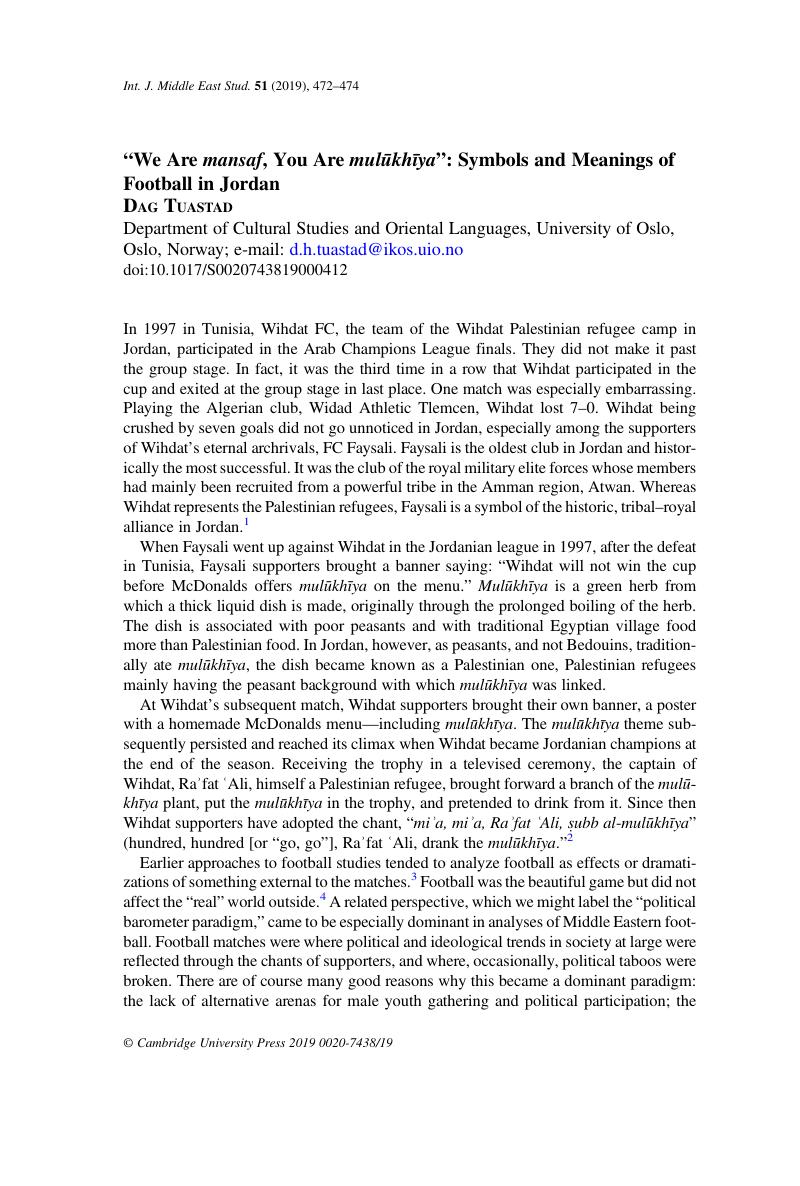Article contents
“We Are mansaf, You Are mulūkhīya”: Symbols and Meanings of Football in Jordan
Published online by Cambridge University Press: 03 June 2019
Abstract

- Type
- Roundtable
- Information
- Copyright
- Copyright © Cambridge University Press 2019
References
NOTES
1 Tuastad, Dag, “‘A Threat to National Unity’. Football in Jordan: Ethnic Divisive or a Political Tool for the Regime?” The International Journal of the History of Sport 10 (2014): 1–15Google Scholar.
2 Mustafa Bala, editor of the Wihdat fanzine al-Riyadi al-Wihdat, interview with the author, Amman, May 2014.
3 Giulianotti, Richard, Football: A Sociology of the Global Game (Cambridge: Polity Press, 1999), 10Google Scholar.
4 Rommel, Carl, “Playing with Difference: Football as a Performative Space for Division among Suryoye Migrants in Sweden,” Soccer & Society 12 (2011): 850–64CrossRefGoogle Scholar; Hargreaves, John, Sport, Power and Culture: A Social and Historical Analysis of Popular Sports in Britain (Oxford: Polity Press, 1986)Google Scholar.
5 Tuastad, Dag, “From Football Riot to Revolution: The political Role of Football in the Arab World,” Soccer & Society 15 (2014): 376–88CrossRefGoogle Scholar.
6 Dorsey, James, The Turbulent World of Middle East Soccer (London: Hurst, 2016), 5Google Scholar; Iskandar, Adel, Egypt in Flux: Essays on an Unfinished Revolution (Cairo: American University of Cairo Press, 2013), 18–19Google Scholar.
7 Cohen, Anthony, The Symbolic Construction of Community (London: Routledge, 1985), 1–15CrossRefGoogle Scholar.
8 Wihdat supporters, interview with author's field assistant Moushira Abu Shemesh, Amman, December 2018.
- 1
- Cited by




